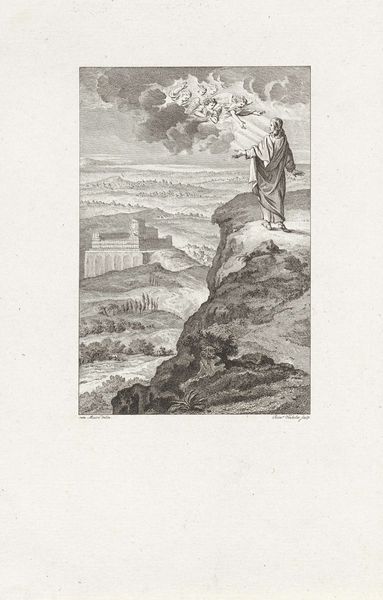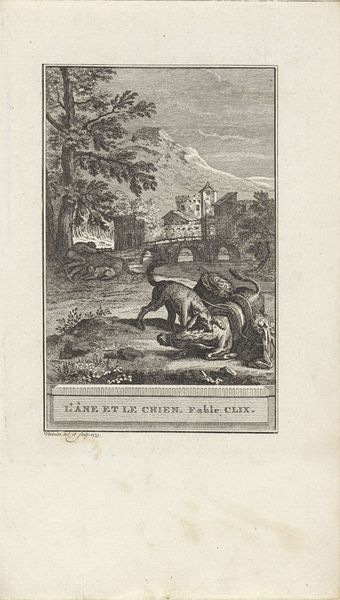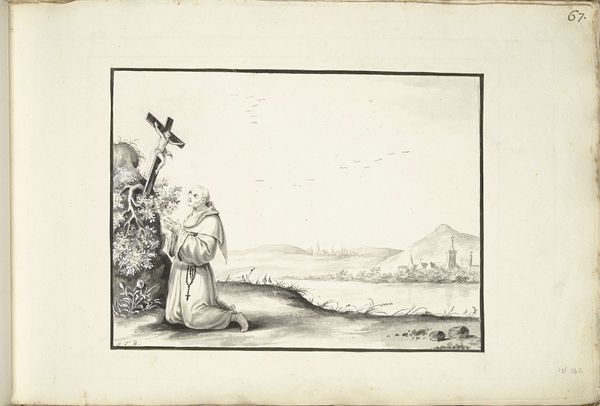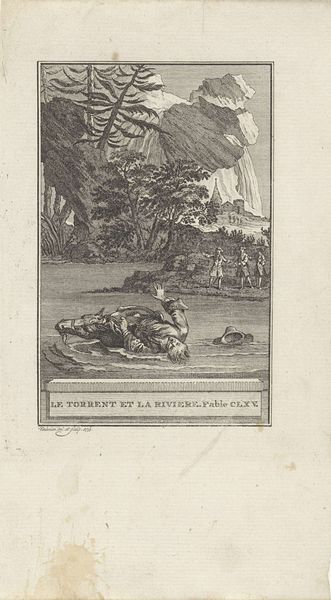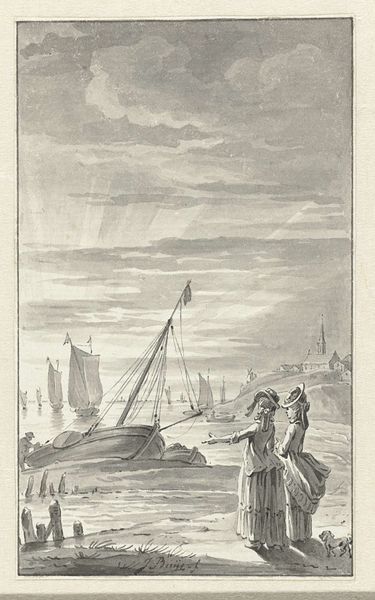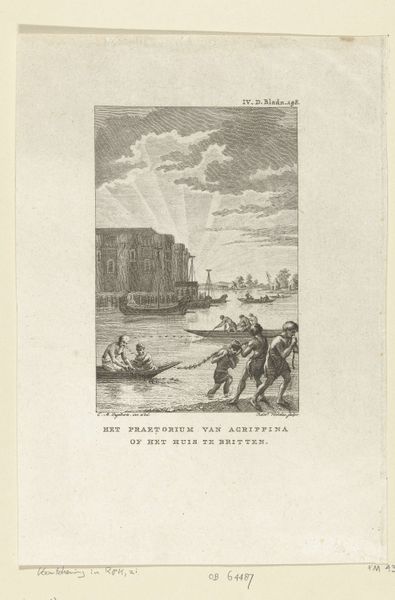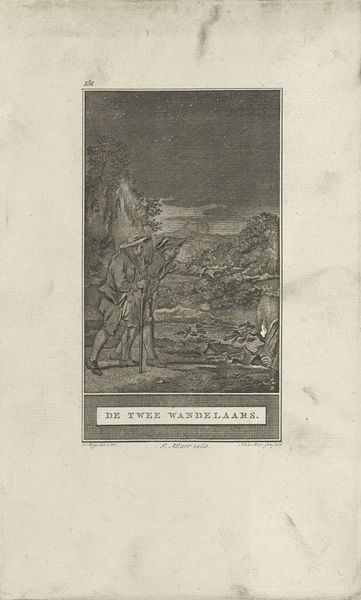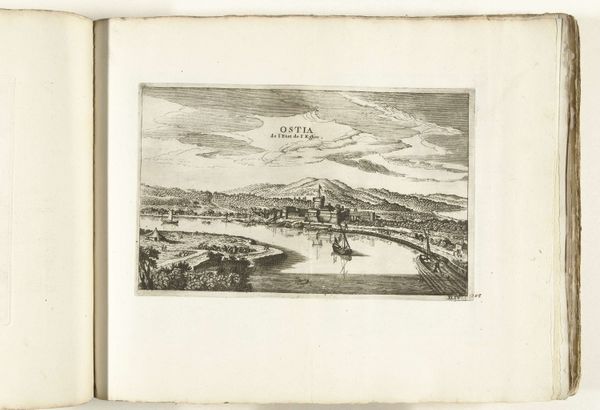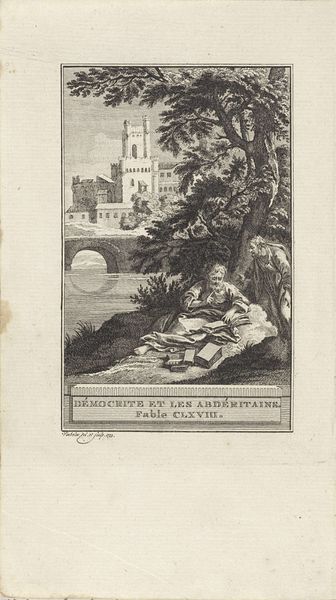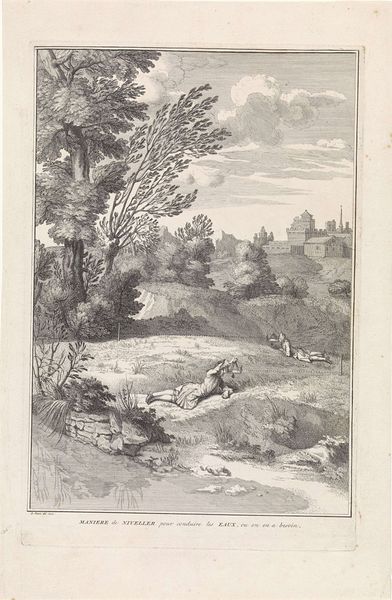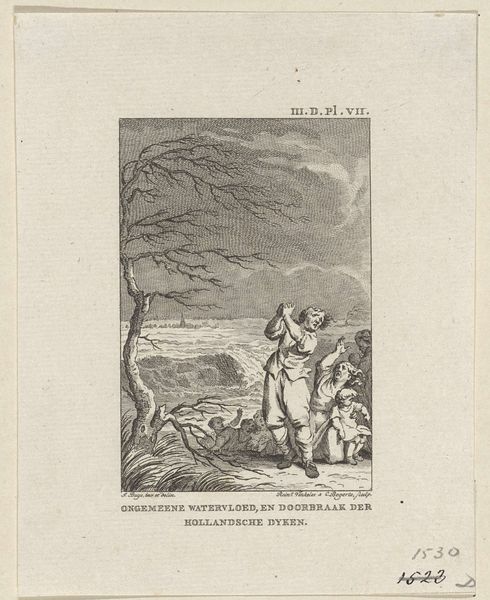
Dimensions: height 215 mm, width 126 mm
Copyright: Rijks Museum: Open Domain
This print, "De honden en de ezel," was made by Reinier Vinkeles, sometime between 1741 and 1816. Its lines were etched into a copper plate, a skilled and painstaking process. Look closely, and you’ll see that everything – the dogs, the water, even the sky – is created by networks of fine marks. Vinkeles likely used a sharp tool called a burin to cut these lines into the metal. The plate would then be inked and pressed onto paper, transferring the image. Prints like this were part of a burgeoning media landscape, making images widely accessible. Etching allowed for detailed reproduction, fulfilling a growing demand for visual information and entertainment in a pre-photographic age. The labor involved in creating this print – the skilled hand of the etcher, the mechanics of the printing press – speaks to the changing landscape of art production. It was a world where craft and industry began to merge, reaching an ever-wider audience. By appreciating this, we recognize the role of skilled artisans in shaping visual culture, beyond traditional notions of fine art.
Comments
No comments
Be the first to comment and join the conversation on the ultimate creative platform.
